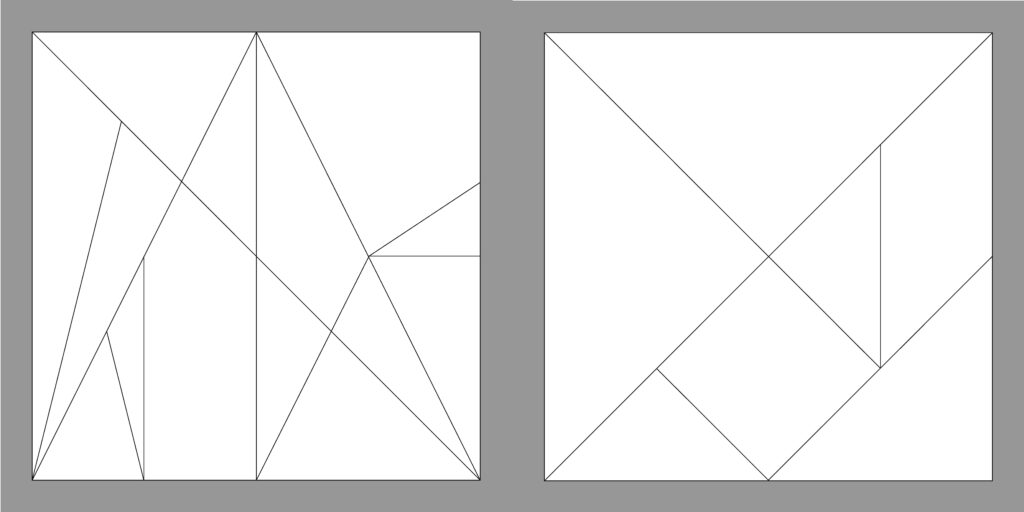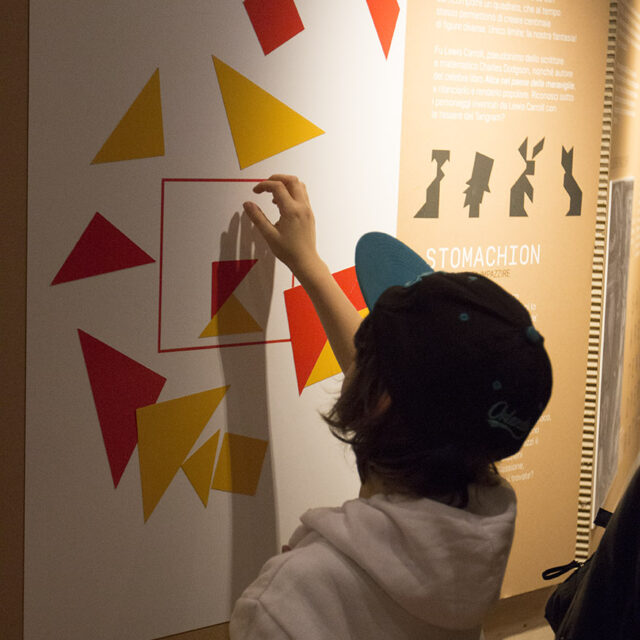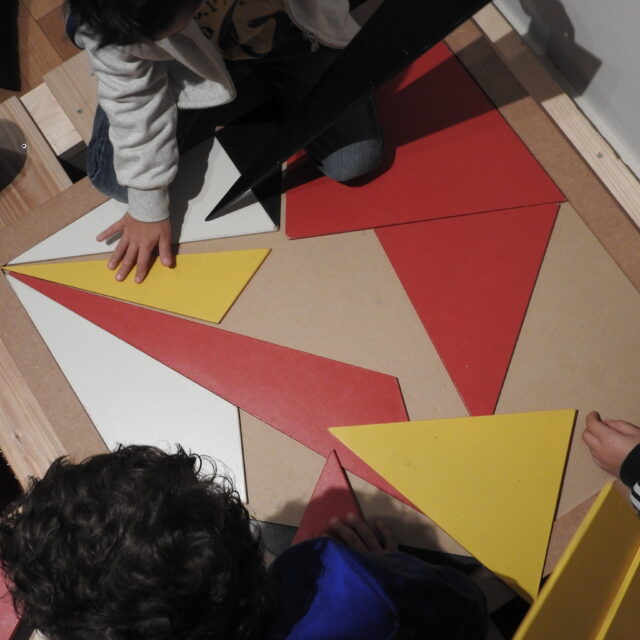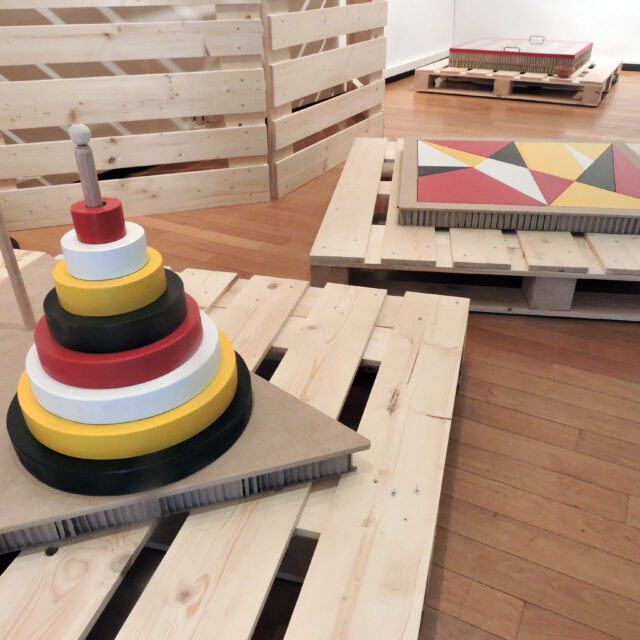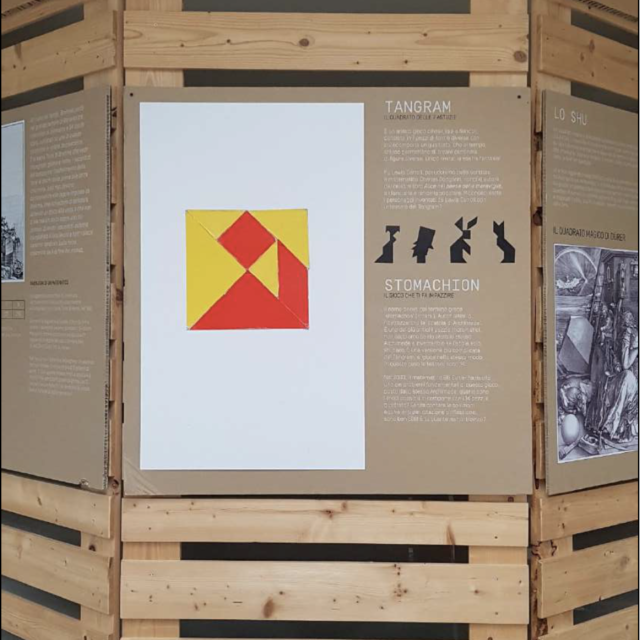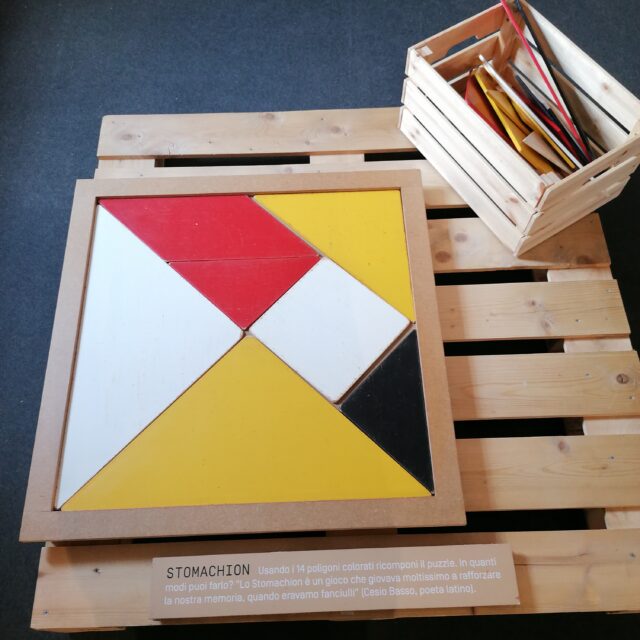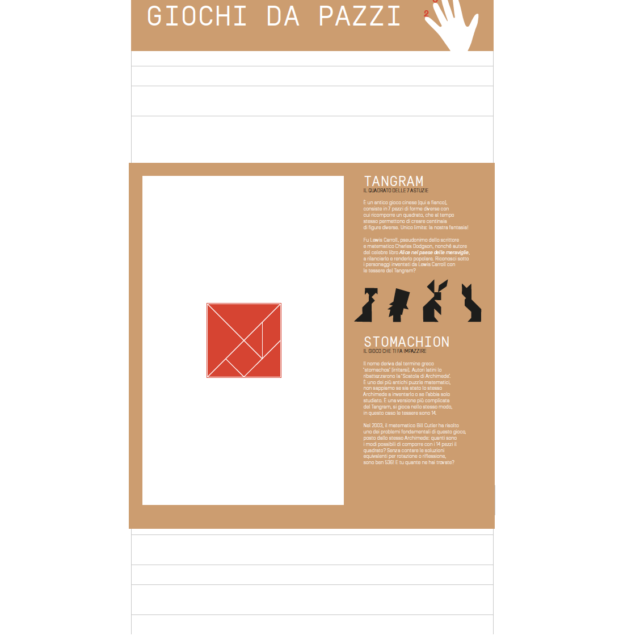TANGRAM is a puzzle game of Chinese origin composed of seven tablets and invented, probably, during the Song Dynasty, 960-1279. The objectives of the game can be twofold: reassemble the initial square (see below) or form any other figure using all the pieces, without overlapping. The word “Tangram” may be derived from the Chinese word tang and the Greek word gramma. In Chinese it means “the seven stones of wisdom.” The tangram arrived in Europe in the early 19th century, but it was Lewis Carroll, pseudonym of the writer and mathematician Charles Dodgson, author of the book Alice in Wonderland, who revived and popularized it a few decades later.
STOMACHION is a more complicated version of the tangram; it is played the same way but consists of fourteen figures that make up a square.
How to play
Using the colored polygons put the puzzle back together. How many ways can you do this? In the vertical magnetic panel, you can use the shapes of the tangram in magnetic material to make up the red square in the center and create new figures. On the horizontal base you can use the large tangram or stomachion shapes to make up the square.
The stomachion is considered a game that greatly benefited to strengthen our memory, when we were children.
cevio basso, latin poet
STOMACHION – The fourteen pieces have the characteristic of being commensurable to the square they compose: 5 pieces have an area equal to 1/12 of the square (i.e., 20/48), 4 pieces 1/24 (8/48), 2 pieces 1/48 (2/48), and the remaining three pieces have an area equal to 1/16 (3/48), 1/6 the quadrilateral (8/48), and 7/48 the pentagon, respectively. Bill Cutler, a mathematical puzzle expert, calculated in 2003 that there are 536 possibilities for solving the stomachion, excluding identical solutions by rotation or reflection that would instead bring the total to 17’152 solutions. The reasoning involved in solving the stomachion and discovering all possible combinations corresponds to a combinatorial calculus problem, perhaps one of the oldest in history.
Teaching links: Combinatorial calculus
The study of Archimedes’ celebrated “Palimpsest” (the oldest copy of written works by the noted mathematical genius of antiquity) suggests that the mathematician already wondered how many ways he could arrange the 14 templates to solve the game. If so, it would probably be the first combinatorial calculus problem in history. However, finding its solution is utterly nontrivial and has been done only in recent years.
How many solutions are there?
For the tangram there is only one solution short of rotations, but for the stomachion there are many more solutions? How many can you find? The animator can take pictures of each solution found, show it, to see if it is the same solution minus movements such as rotations or if it is really a new solution. In the photo gallery are some solutions found by visitors to the exhibition.
It is fun for children to stimulate them to create curious figures or characters using the different geometric shapes of the tangram or even the stomachion. Perhaps characters from the story of Alice in Wonderland? Like the ones drawn in the panel. Or ask them to recognize the different figures that make up the Alice characters that are depicted on the panel.
The stomachion may be an invention of Archimedes, the great inventor and mathematician of ancient Greece. In truth, it remains a mystery whether he was its inventor or only studied it. The name may derive from the Greek word stomachos (irritation) or from ostomàchion meaning “battle of the bones,” because in ancient times this game was constructed from small bones that were carved into the fourteen shapes.
How to build
EXHIBIT MATERIAL:
- Horizontal pallet (120×120 cm)
- Vertical pallet (100×215 cm)
- Wood and cardboard base for playing (80×80 cm)
- Stomachion large shapes (MDF) & Tangram large shapes (MDF)
- Cardboard title panel (100×20 cm)
- Cardboard panel with magnetic panel (100×100 cm) for tangram with magnetic tiles
- Cardboard panel with “STOMACHION” explanation (65×10 cm) for cardboard base
CLICK AND DOWNLOAD PRINT-READY .PDF FILES:
- MAGNETIC PANEL 55X90 cm
- MAGNETIC TILES for magnetic TANGRAM 30X30 cm
- (ITA) STOMACHION panel 100×100 cm (material: cardboard)
- (ITA) STOMACHION panel 65×10 cm (material: cardboard)
- (FRA) STOMACHION panel 100×100 cm
- (FRA) STOMACHION panel 65×10 cm
- TANGRAM & STOMACHION TILES (for laser cut)
- (ITA) STOMACHION title 100×20 cm
- (FRA) STOMACHION title 100×20 cm
